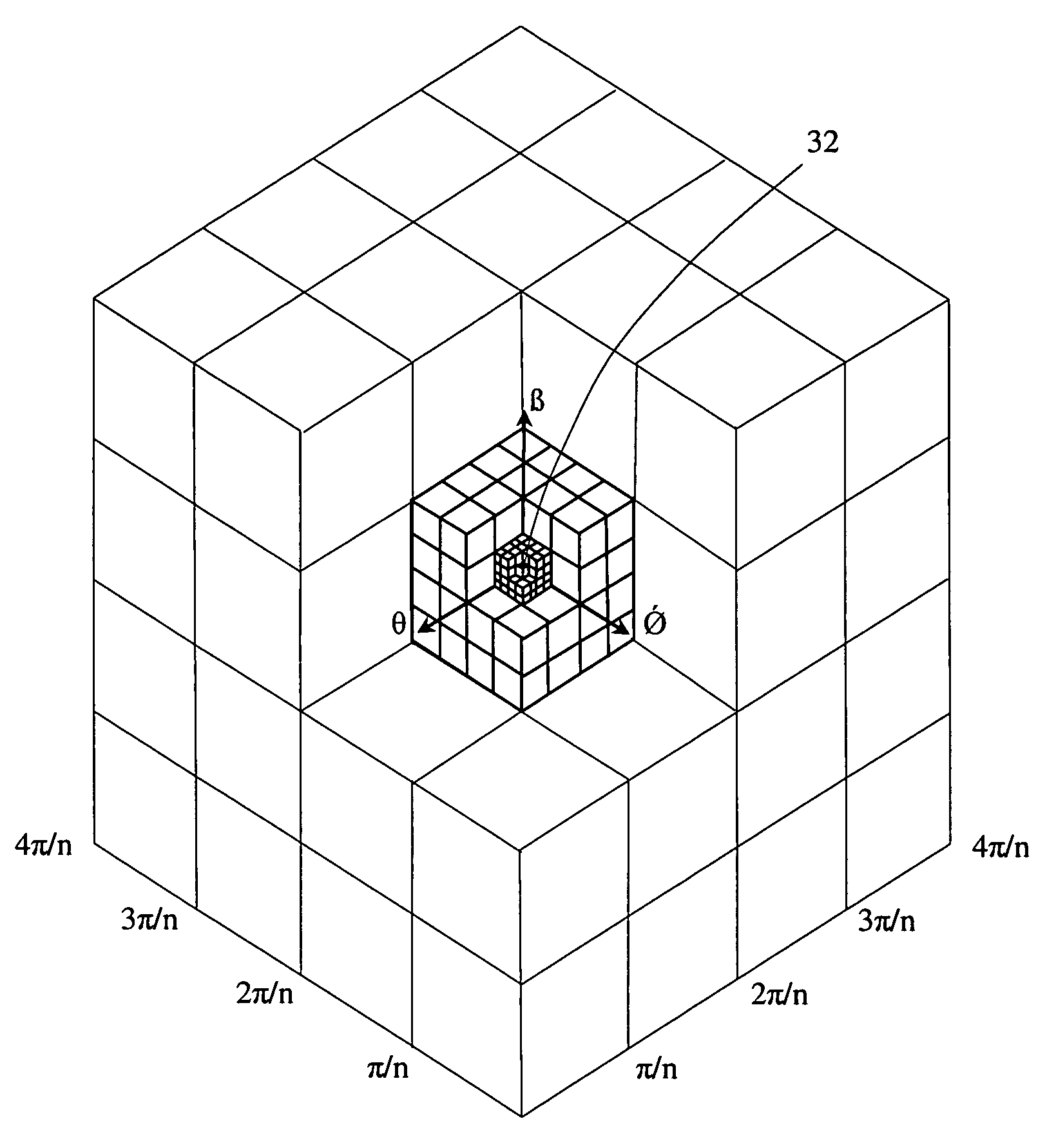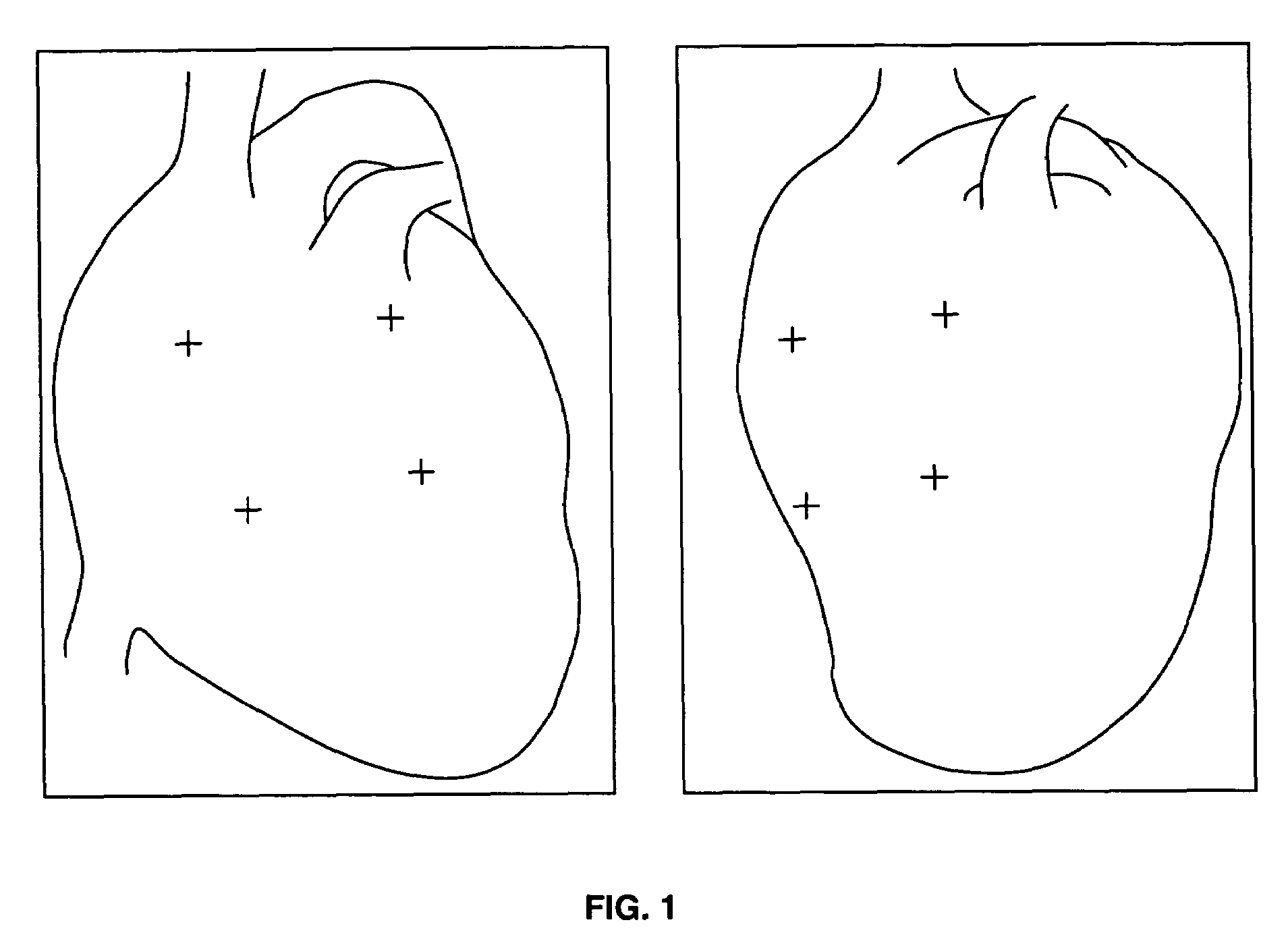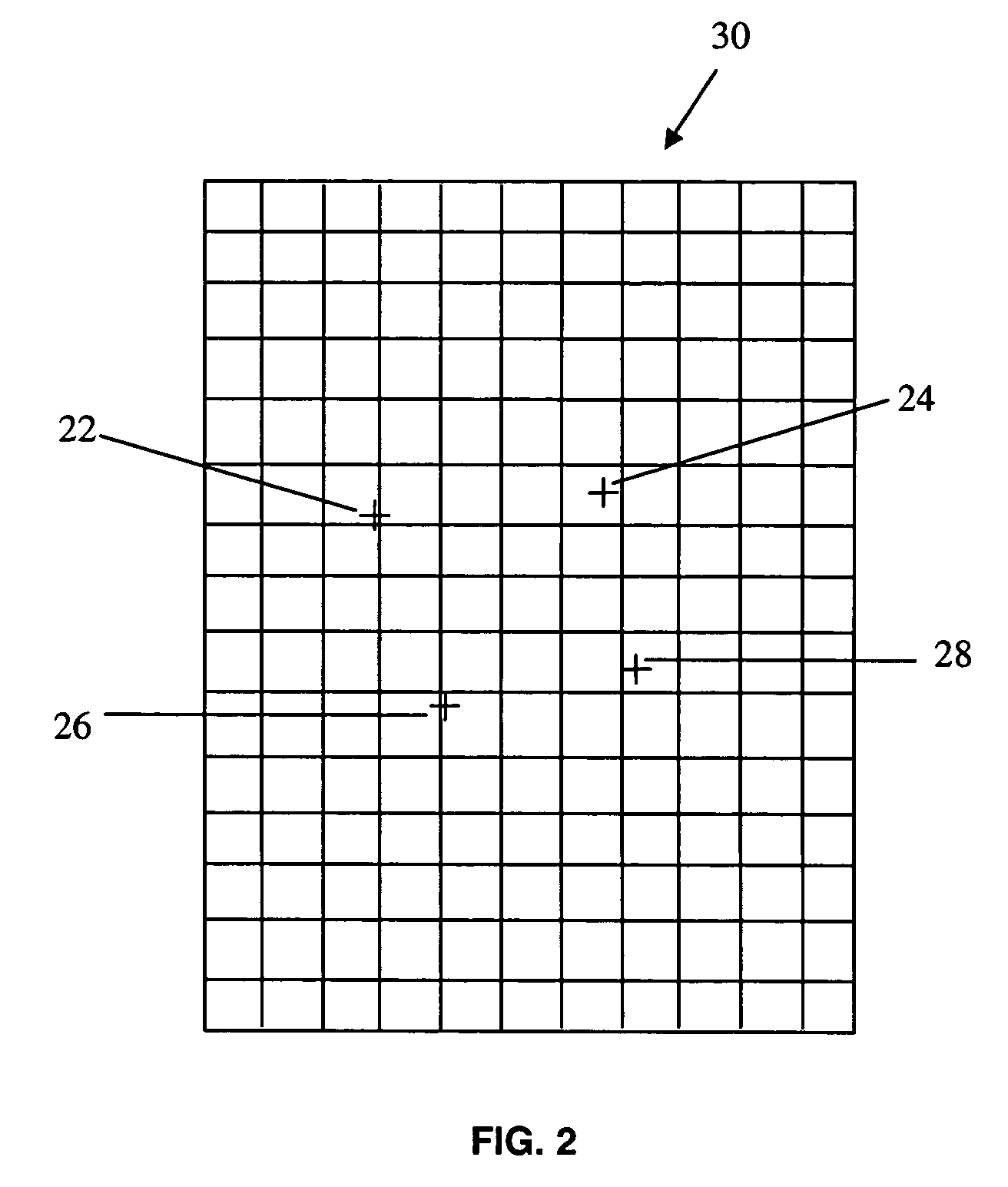Method for surgical navigation utilizing scale-invariant registration between a navigation system and a localization system
a localization system and navigation system technology, applied in the field of interventional medicine, can solve the problem that the data of the localization device is not readily available to control the navigation of the device by computer-controlled means, and achieve the effect of reducing the exposure to x-ray radiation and more precise navigation and operation
- Summary
- Abstract
- Description
- Claims
- Application Information
AI Technical Summary
Benefits of technology
Problems solved by technology
Method used
Image
Examples
Embodiment Construction
[0010]A system for navigating a medical device through the lumens and cavities in an operating region in a subject typically utilizes an elongate medical device, having a proximal end and a distal end adapted to be introduced into an operating region in a subject. The system also connects to an imaging system from which images can be transferred to the navigation system. The navigation system includes a display 20 as shown in FIG. 1 for displaying an image of the operating region, and may include a representation of the distal end of the medical device in the operating region. The imaging system may be an x-ray, MRI, ultrasound, or other imaging system. Most interventional procedures currently use fluoroscopy for imaging of the blood vessels, tissue surfaces, and catheter devices. Dye or contrast agents which absorb X-rays can be injected through the catheter system to obtain a “roadmap” of the vessels or outline of the endocardial surfaces. The medical devices can contain radiopaqu...
PUM
 Login to View More
Login to View More Abstract
Description
Claims
Application Information
 Login to View More
Login to View More - R&D
- Intellectual Property
- Life Sciences
- Materials
- Tech Scout
- Unparalleled Data Quality
- Higher Quality Content
- 60% Fewer Hallucinations
Browse by: Latest US Patents, China's latest patents, Technical Efficacy Thesaurus, Application Domain, Technology Topic, Popular Technical Reports.
© 2025 PatSnap. All rights reserved.Legal|Privacy policy|Modern Slavery Act Transparency Statement|Sitemap|About US| Contact US: help@patsnap.com



